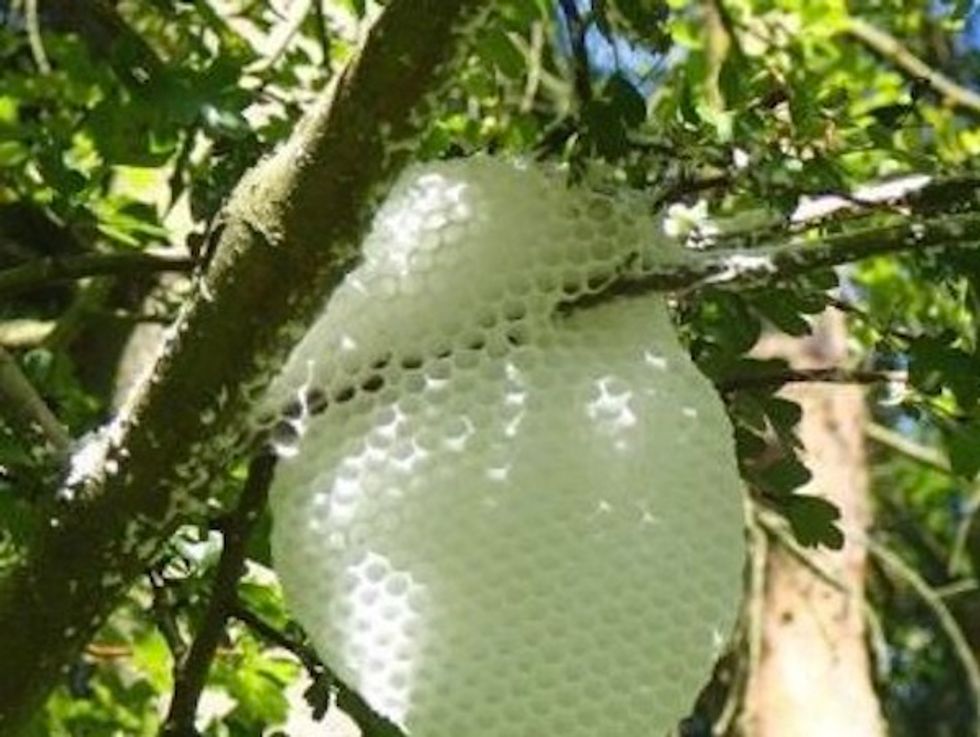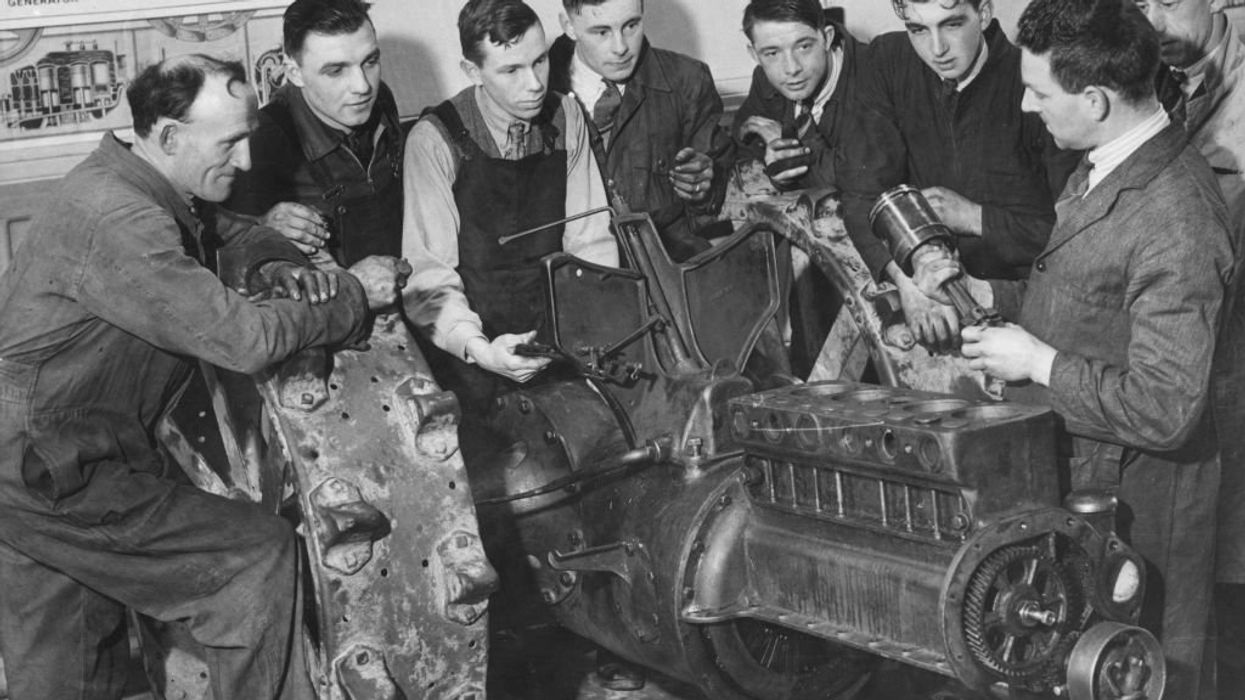
© 2024 Blaze Media LLC. All rights reserved.
Nature Reserve Officer Thought She Spotted a Plastic Bag in a Tree. A Closer Look Revealed It as a 'Rare' Sight.
July 16, 2015
"What would create such a beautifully fragile and exposed structure."
A nature reserve officer in the U.K. thought she saw a plastic bag in a tree, but upon closer inspection, she saw a network of hexagons, the trademark work of bees.
Still, the white hanging structure was unusual. So Sarah Gibbs, a senior reserve officer at Northamptonshire's Pitsford Water Nature Reserve, snapped a photo.

"Whilst walking within one of the woodland compartments at Pitsford Water Nature Reserve I noticed something unfamiliar hanging about two meters up in a hawthorn bush," Gibbs said, according to the Wildlife Trusts for Bedfordshire, Cambridgeshire and Northamptonshire's website, which described the comb as a "pop up comb." "It was about the size and width of my hand and looked to be a bright white honeycomb. No signs of bees or wasps were present but I was intrigued to know what would create such a beautifully fragile and exposed structure."

Gibbs went on to say that she contacted a bee expert who told her this comb was likely created by a warm of honeybees, looking to establish a new colony.
"Unable to find a suitable place such as a cavity in a tree, the swarm chose this spot and automatically went in to cell building mode," Gibbs said. "The structure would have only been temporary as a colony would not have survived any bad weather and the risk of predators such as woodpeckers. Hopefully they managed to locate somewhere more suitable nearby."
The Wildlife Trusts reached out to David White with the Northamptonshire Beekeepers' Association, who said he thinks the bees probably did move on to a better location.
"This is a wild comb generated by a swarm of honey bees; when bees swarm they top up with a three day supply of food from the hive that they have just left, and using their wax glands will generate a comb in the wild," White told the Wildlife Trusts. "The fact that the comb is still there suggests that the colony of bees was possibly spotted by an active beekeeper who gave them the opportunity of a permanent home."
According to the University of Arkansas, honeybees will swarm when a colony gets too large and crowded in one location. The bees will start to rear a new queen bee and when she's almost mature, the old queen bee will leave the hive with some of the others to find a new home.

The university explained that moving a swarm of bees is not difficult. If the queen is collected, the others will follow.
(H/T: io9)
—
Front page image via Sarah Gibbs courtesy of the Wildlife Trusts of Bedfordshire, Cambridgeshire and Northamptonshire.
Want to leave a tip?
We answer to you. Help keep our content free of advertisers and big tech censorship by leaving a tip today.
Want to join the conversation?
Already a subscriber?
more stories
Sign up for the Blaze newsletter
By signing up, you agree to our Privacy Policy and Terms of Use, and agree to receive content that may sometimes include advertisements. You may opt out at any time.
© 2024 Blaze Media LLC. All rights reserved.
Get the stories that matter most delivered directly to your inbox.
By signing up, you agree to our Privacy Policy and Terms of Use, and agree to receive content that may sometimes include advertisements. You may opt out at any time.


